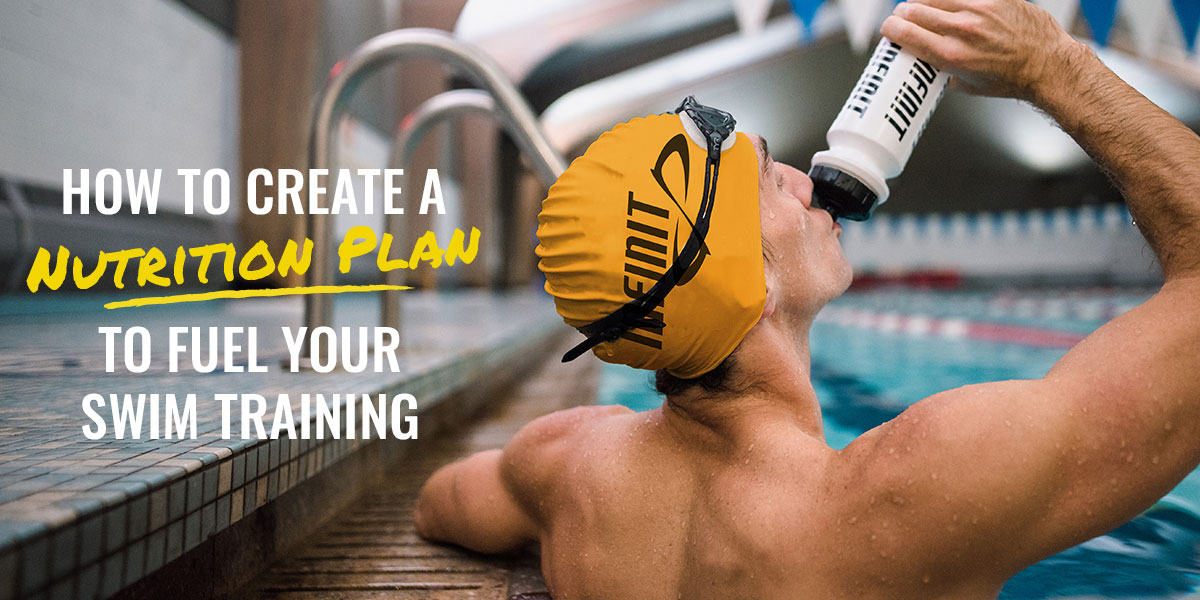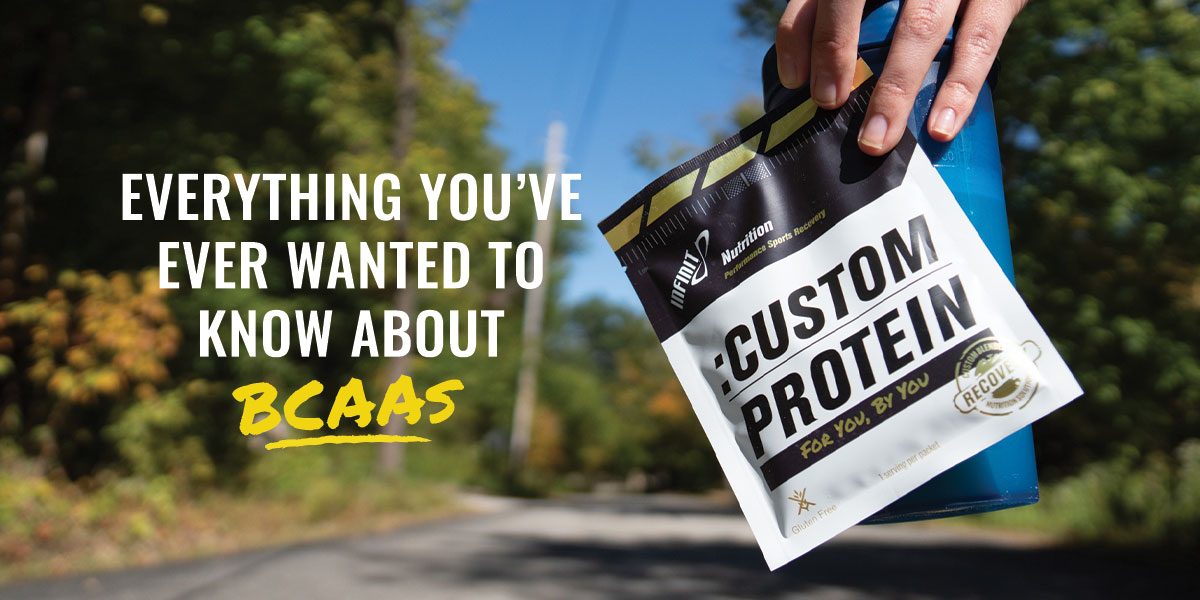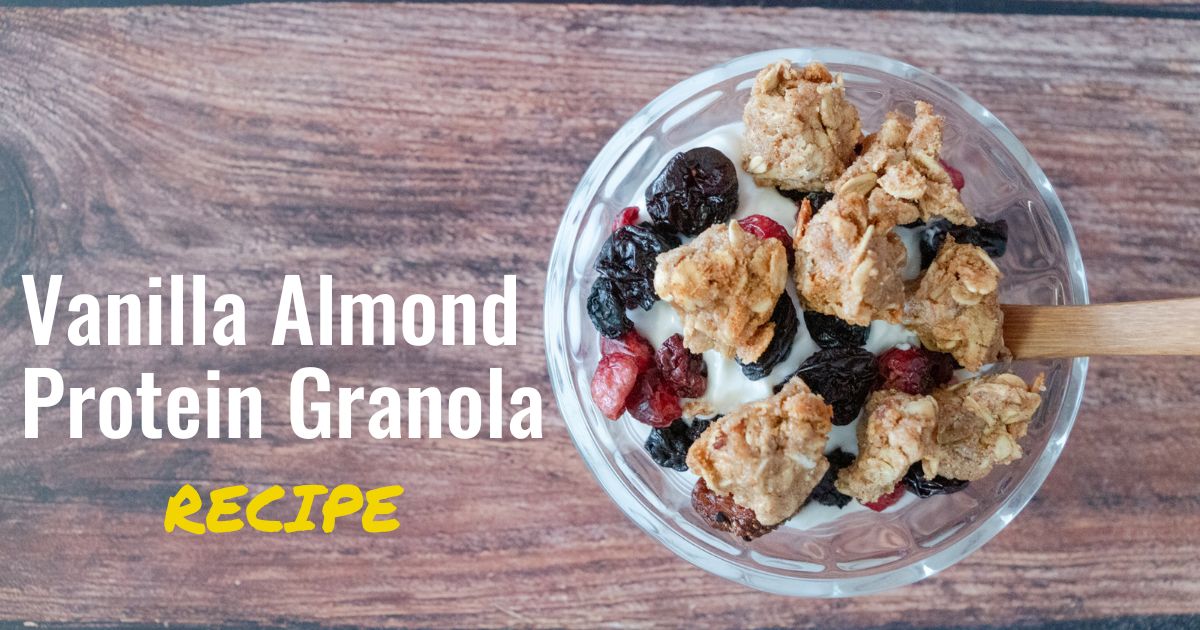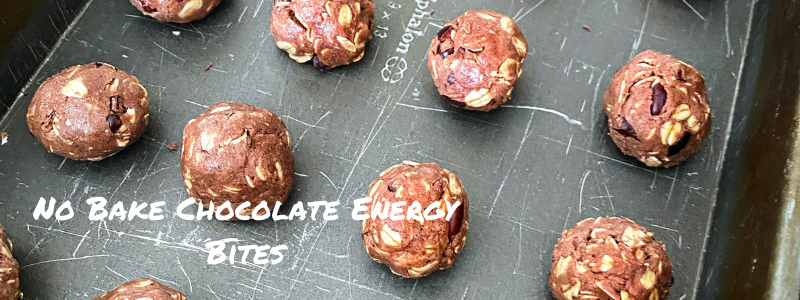Fueling With Fructose
- By INFINIT Interns
- Jul 18, 2023
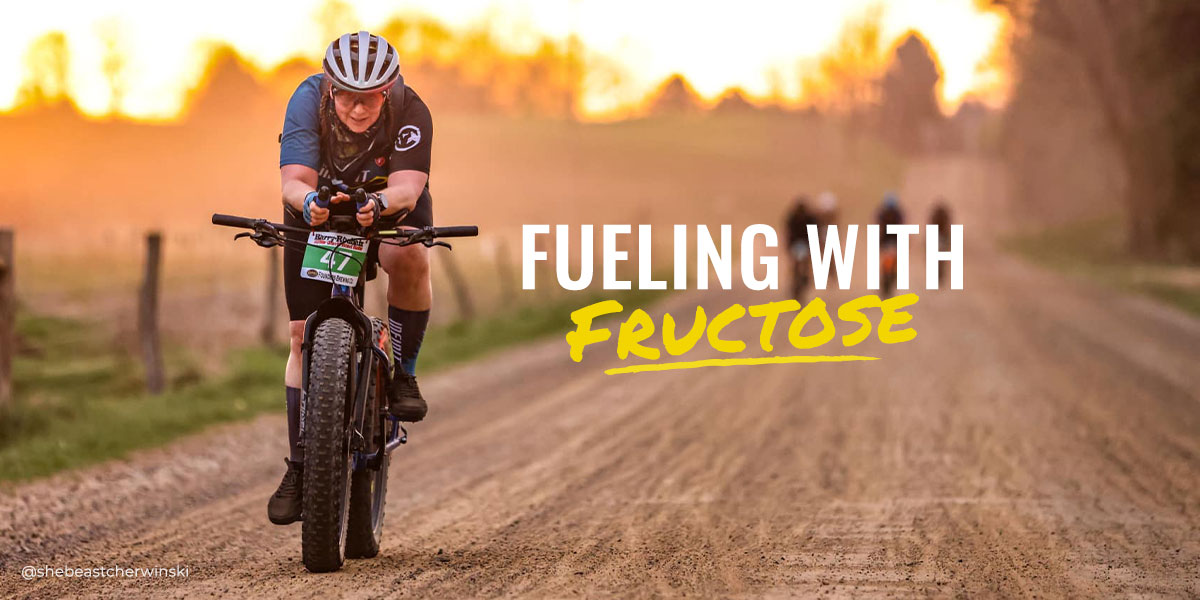
The crucial role fructose plays in pushing your hourly carbohydrate intake in a high carb endurance nutrition strategy.
Fructose — It’s a well-known but often misunderstood sugar. Most commonly associated with ‘high fructose’ corn syrup found in processed foods and sodas, pure fructose is actually a natural sugar found in fruit, and as recent buzz and emerging research have been spotlighting, it may also be a tool in endurance nutrition.
High carbohydrate fueling methods utilizing fructose have the potential to be a new gateway to enhanced athletic performance, power output, and recovery in endurance athletes.
So what exactly is fructose? We’ll break it down and explore the science behind how this sugar could play a role in unlocking your greatest endurance performance.
WHAT IS FRUCTOSE?
Fructose is a naturally occurring simple carbohydrate, sometimes referred to as “fruit sugar.” Like glucose, fructose is a “monosaccharide” — the simplest form of sugar and the most basic form of carbohydrate.¹
Fructose can be found alone or as part of sucrose (a “disaccharide” made of glucose + fructose). Sucrose is what we Americans typically refer to as table sugar, cane sugar, or just plain and simple “sugar.”
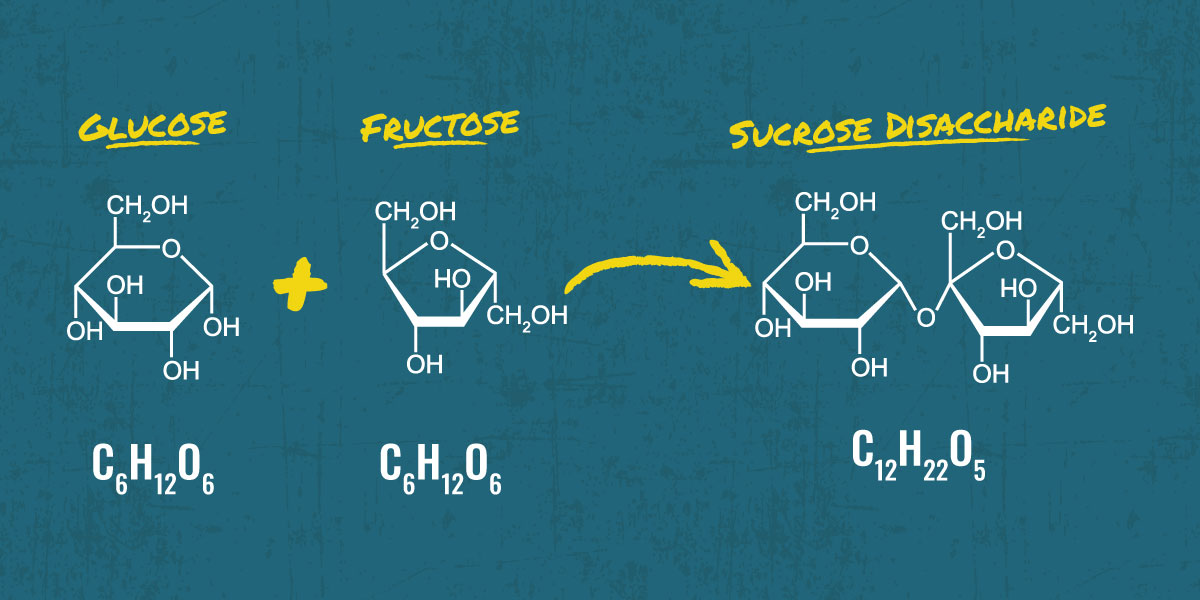
Is High-Fructose Corn Syrup the Same as Fructose?
No! High-fructose corn syrup (HFCS) is not the same as fructose. HFCS is a mixture of fructose and glucose made by an enzymatic process from glucose syrup in corn.² Meanwhile, fructose is a naturally occurring simple sugar.
GLUCOSE VS. FRUCTOSE
Although they are both simple carbohydrates, glucose, and fructose differ in a few ways.
1. What foods/drinks they’re found in
Fructose is naturally found in fruits, vegetables, and honey.¹ Whereas, glucose is found more in starchy carbs like rice, bread, oats, and pasta.⁶
In sports nutrition products, fructose is usually found in the crystalline (granulated) form. Glucose is often found in the form of dextrose (powdered or liquid glucose) or maltodextrin (long-chain form of multiple glucose units).
2. Sweetness
Fructose is far sweeter than glucose.
Pure fructose is about 2x sweeter than HFCS and about 1.5x sweeter than cane sugar.² This means less fructose can be used to create a higher level of sweetness, which is why you often see fructose used in lower-sugar foods and beverages.
3. Blood sugar impact
Consuming glucose has a much bigger impact on blood sugar levels than fructose.
A glycemic index (GI) is a measure of how carbohydrates affect blood glucose levels. To give you some comparison, glucose has a high GI (100) because it’s rapidly absorbed into the bloodstream, causing levels to increase quickly. HFCS has a medium GI (65), similar to table sugar.² Fructose has a low GI (19), meaning it does not cause rapid spikes or drops in blood sugar levels.
4. Absorption and metabolism
The biggest difference between glucose and fructose is how they are processed in the body. This is the key to fructose’s power as a fuel source, and what we’ll focus on.
Compared to glucose which is metabolized throughout all tissues in the body, fructose is metabolized mainly in the liver. The majority of metabolized fructose is then converted into glucose to be used in energy production (making ATP) throughout the body.

The gut is where the magic happens — Once the food or drink passes the stomach, it enters the lower intestine where the nutrition actually gets absorbed via little protein structures called intestinal transporters.

Fructose and glucose are absorbed using totally different intestinal transporters. Fructose is absorbed via glucose transporter 5 (GLUT5). Glucose, on the other hand, is absorbed via sodium-glucose cotransporter 1 (SGLT1).¹
Once absorbed, the body metabolizes fructose in one of two ways:
- It’s directly broken down for energy — Hexokinase in muscle and adipose tissue phosphorylates fructose, which then enters glycolysis where it’s broken down and energy is produced, and results in the production of one extra ATP compared to glucose.¹
- It’s converted to glucose in the liver — Once it goes through the Fructose 1-phosphate pathway to be converted to glucose it can then be stored or broken down to produce energy.
FRUCTOSE AND ATHLETIC PERFORMANCE
So why does this matter to athletes? Well, research shows that consuming both carbohydrate sources (glucose + fructose) can help elite athletes take in more fuel, and in return produce more energy to enhance their performance.⁴
Since glucose is absorbed utilizing the one type of intestinal transporter (SGLT1), the system can be overused and become oversaturated. When a lot of glucose-based carbs are ingested (>60g/hour), SGLT1 reaches its capacity, limiting how much can be absorbed and used to create energy.⁴
This is where fructose comes into play. Since fructose does not use the same transport system as glucose, when SGLT1 is at capacity, fructose can still use its own GLUT5 transporter to be absorbed and eventually converted into energy.

DURING EXERCISE
This theory is relatively new and the research and literature around it is limited but growing. Most of the buzz around the ultra high-carb fueling methods has come from anecdotal reports from top professional athletes and the coaching and nutrition staff of Tour de France riders.
The amount of carbohydrates these elite athletes are consuming is mind boggling. It's been reported that some of the top Tour riders consume 130-150+ grams of carbohydrates per hour during the most physically demanding stages.
While details behind what these athletes are consuming to hit these crazy high marks are usually kept a secret, given the physiological limits of our gut transporters, fructose is likely a big part of the equation.
But is there data to support the use of fructose in hitting these super high hourly carb intake targets? Turns out, yes.
In one study, researchers concluded that the increase in fructose could improve endurance exercise performance by about 8 to 9%.⁴ Their findings also confirmed the theory that carbohydrate oxidation rates (the amount of carbohydrates used for energy) differ depending on the type of carbohydrate that is consumed.
In this study, they examined the effects of ingesting glucose only, fructose only, and the co-ingestion of both glucose and fructose. They found that ingesting only glucose results in peak exogenous carbohydrate oxidation rates of about 1.1 g/min (e.g. max of 66 grams per hour).⁴ Consuming fructose only, has the result of equivalent or lower oxidation rates to glucose-only fueling. But when the subject co-ingested glucose and fructose, it led to oxidation rates increasing up to 1.75 g/min (e.g. 105 grams per hour).⁴
This same study also highlighted that when high loads of only fructose were consumed, higher levels of GI distress were reported, and the capacity of fructose absorption was limited. So a combination approach is really key.
They concluded, based on the findings of this study, the upper limit for glucose absorption appears to be about 66 grams per hour. But clearly once you add fructose into the mix, you can start pushing the limits!

AFTER EXERCISE
While most of the buzz around High Carb Fueling methods revolves around fueling during exercise, there is also mounting evidence that fructose can enhance post-workout recovery too.
Every endurance athlete understands the vital importance of post-workout recovery nutrition. Glycogen is glucose stored in our muscles and liver that is used as a sustained energy source during exercise.⁵ When it’s gone, you “hit the wall”, so maximizing glycogen storage is key for endurance athletes in particular.
So what should you consume right after exercise? Bingo — Carbohydrates! This allows for better recovery, less muscle soreness and fatigue, and leaves you better prepared for the next training session.
How does fructose factor into this? Research has shown consuming fructose can actually improve liver glycogen repletion rates, thereby enhancing your recovery and reducing negative post-exercise symptoms (soreness, muscle breakdown, fatigue).
Researchers found when glucose and fructose were co-ingested during the first 4 hours after exercise, it resulted in their endurance exercise capacity (ability to perform the cardiovascular exercise) increasing by about 32.4% during a treadmill workout performed the following day, compared to glucose only.⁴
They also found that glucose ingested alone has a glycogen repletion rate of about 3.5 g/h.⁴ Meanwhile glucose and fructose co-ingestion resulted in a rate of about 7.4 g/h.⁴ More than double the rate!⁴
The higher the repletion rate the better your recovery. The better your recovery, the better you will feel and perform the next day. This means for multi-day races, back-to-back strenuous sessions, or tournament-style competitions, consuming glucose and fructose can be a tool in both fueling and recovering for your next session.

SHOULD I BE FUELING WITH FRUCTOSE?
Should every athlete go out and start fueling with 100+ grams of carbs each hour? Not necessarily. Each athlete is different, and so are their goals. It’s important to keep in mind, even though you’re hearing about world class cyclists and pros touting their high-carb fructose fueling plans, this may not be appropriate for all athletes.
Elite and competitive athletes will likely benefit from using higher carb mixes because they are pushing a higher amount of watts and using a lot more energy. Due to the maximum absorption of glucose being about 66 g/h, they will need to include fructose in their fueling plan to be able to hit 90-100+ grams per hour.
If you decide to push your carb intake, be sure to include both glucose and fructose in your approach.
All of INFINIT’s traditional Custom Fuel + Hydration blends and preset formulas contain fructose through the use of pure cane sugar or sucrose (which is 50% fructose and 50% glucose). These products allow the body to use both carbohydrate transport systems to increase the amount of available fuel when training. Sucrose is also beneficial in recovery products since fructose replenishes the liver glycogen stores and glucose replenishes muscle glycogen stores.⁴
But if you’re looking to really tap into the added potential of a high carb fueling strategy, our new :PREMIUM Fructose Fuel is the ticket. This ultra high-carb formula contains a scientifically formulated 2:1 glucose to fructose blend. Based on current evidence, a 2:1 glucose-to-fructose ratio is the right balance to maximize absorption while minimizing the potential downsides of consuming fructose. Created with help from top INFINIT athletes and coaches, this mix is perfect for high-performing athletes sustaining high-intensity exercise for prolonged durations and are looking to take their performance to the next level.
If you’re used to traditional INFINIT mixes, which tend to be light and sometimes salty, it’s important to note the :PREMIUM Fructose Fuel will be a lot sweeter due to the added fructose (1.5x sweeter than cane sugar).
And while we always recommend you train with the nutrition that you race with, this is absolutely critical to the success of ultra high carb fueling. If you plan to use PREMIUM Fructose Fuel on race day, it’s HIGHLY RECOMMENDED that you train with this same mix to “train your gut,” and allow your body to get used to taking in such a large amount of nutrition each hour.
Curious if fructose should play a part in your fueling plan? Schedule a time to chat with an INFINIT dietitian. Our Formulation Team will give the best advice on what your mix should contain to ensure proper nutrition for YOUR needs.
SOURCES
- Syeda AA. Glucose vs. fructose: What’s the difference? Clean Eating. April 19, 2021. Accessed June 15, 2023. https://www.cleaneatingmag.com/clean-experts/ask-the-dietitians/glucose-vs-fructose-whats-the-difference/#:~:text=Fructose%20changes%20blood%20sugar%20levels,visceral%20fat%20around%20essential%20organs.
- Cleveland Clinic medical. Glycogen: What it is & function. Cleveland Clinic. Accessed June 15, 2023. https://my.clevelandclinic.org/health/articles/23509-glycogen.
- Fuchs CJ, Gonzalez JT, van Loon LJC. Fructose co-ingestion to increase carbohydrate availability in athletes. The Journal of physiology. July 2019. Accessed June 15, 2023. https://www.ncbi.nlm.nih.gov/pmc/articles/PMC6852172/.
- Browna. Nutrition flexbook. 4.4 Carbohydrate Uptake, Absorption, Transport & Liver Uptake | Nutrition Flexbook. Accessed June 15, 2023. https://courses.lumenlearning.com/suny-nutrition/chapter/4-4-carbohydrate-uptake-absorption-transport-liver-uptake/.
- Wpengine. Fructose. Calorie Control Council. April 11, 2018. Accessed June 15, 2023. https://caloriecontrol.org/fructose/#:~:text=Fructose%20is%20also%20known%20as,from%20glucose%20syrup%20from%20corn.
- Biochemistry, Fructose Metabolism . Accessed June 15, 2023. https://www.ncbi.nlm.nih.gov/books/NBK576428/.


